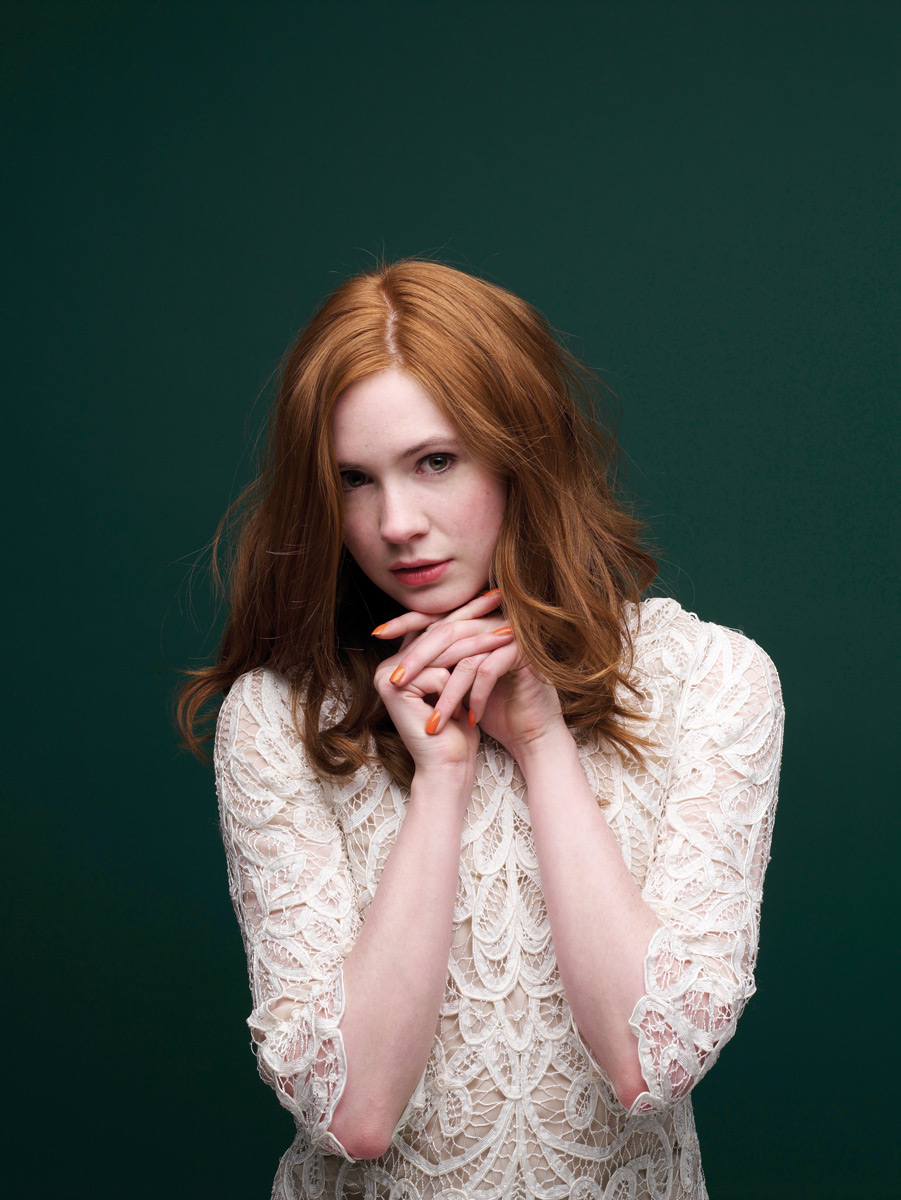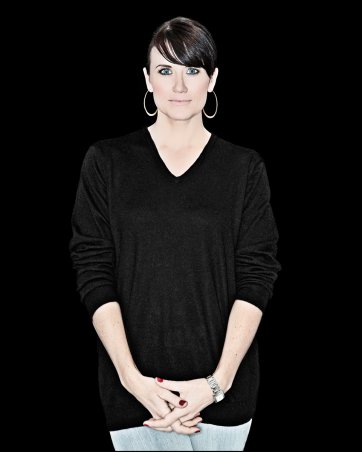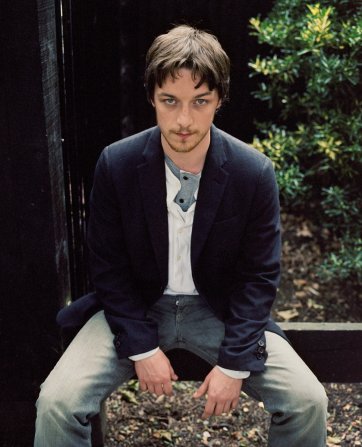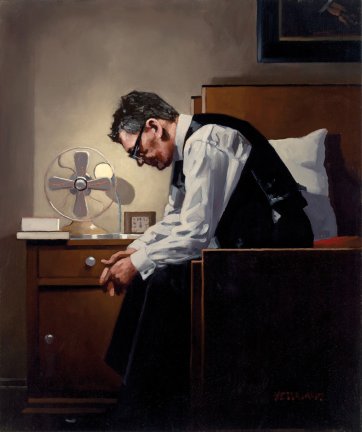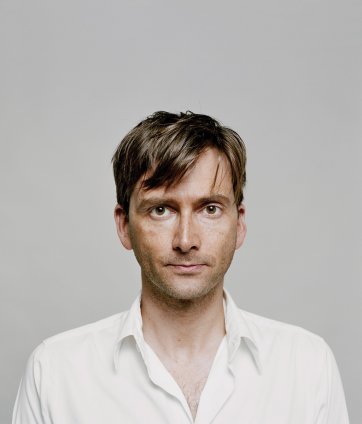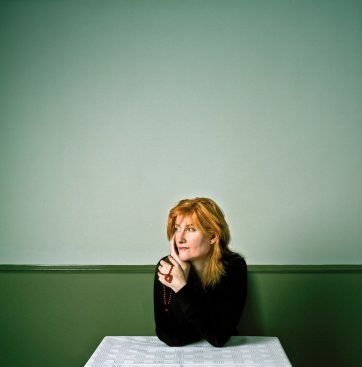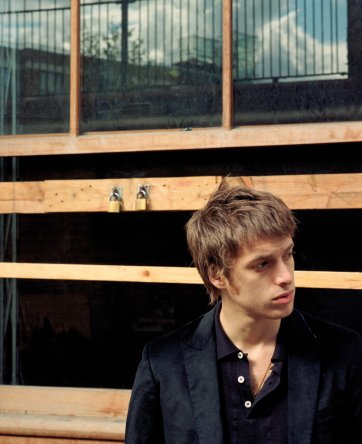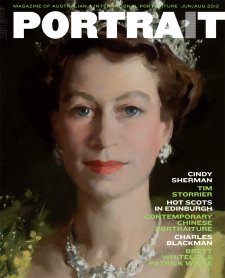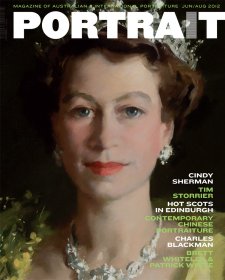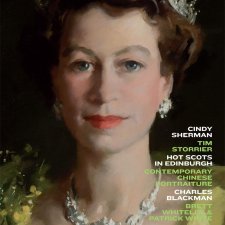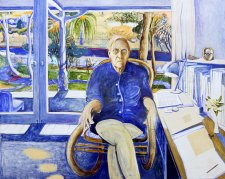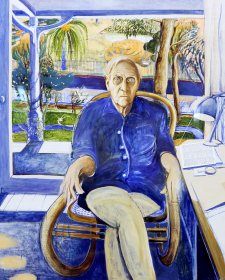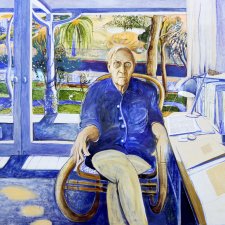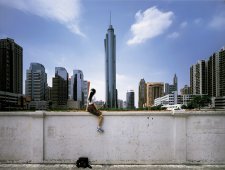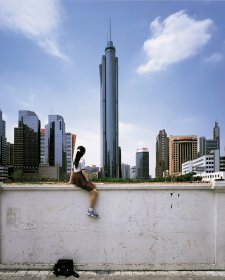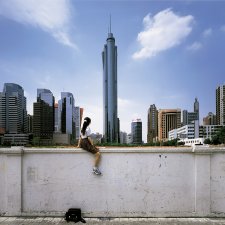For many people the name Scottish National Portrait Gallery used to suggest a rather dark and forbidding building where the portraits of dimly-remembered figures from the past were formally presented
If pressed they might suggest that you could find Mary, Queen of Scots there, possibly Robert Burns and Walter Scott, and then give up. I think one of the most surprising and pleasing features of the recently reopened Gallery is the now universal recognition that the Gallery is about the present as well as the past. That it is about contemporary achievement as much as distant fame. And that its collection embraces not just oil portraits and marble sculptures but photography, video and sound.
Hot Scots is the display that reinforces this new image. Modest in size – it is hung along just two walls. But those walls are silvered, the room is bright and the works are deliberately eye-catchingly placed to be visible from the front door. The display is shown opposite the entrance to the brand-new glass lift, which is one of the most striking features of the Gallery. Hot Scots has proved hugely popular. For most of our visitors the Hot Scots display is the first they see in the Gallery. And our visitors, and young people in particular, find it reassuring that the first portraits they see in the Gallery are of people they have actually heard of and about whose lives they know from the press and television.
The curatorial team created seventeen new exhibitions or displays for our opening on 1 December last year. They range from seventeenth century political history to nineteenth century sport, from the meaning of tartan to the First World War at sea. On some of these curators were working three or more years ahead. But Hot Scots was put together in the last few months of the project so that it could be fresh and up-todate. Duncan Forbes was the curator in charge and he spent hours looking through magazines, searching websites and contacting agents. Everything was specially acquired for the display. So while we already had a really great photograph by Annie Leibovitz of Sean Connery, taken in 1994 and presented by the photographer, we decided to ignore that and choose a much more recent photograph by Albert Watson. We wanted to get both classic images and present an exhibition that would tell a strong story about Scotland’s creativity now. The photographs needed to work together visually as a coherent group. And we wanted to add some really interesting new personalities into the collection.
I felt it would unimaginable to reopen the Gallery without Sean Connery on our walls. And I also felt that Susan Boyle, whose recent phenomenal success has warmed the hearts of millions, should also be seen. After that, it was up to Duncan and his young colleagues to choose. The rumour in the Gallery was that if I, the Director, had heard of them then they couldn’t possibly be Hot Scots. And out they went. There was some truth in that!
Scotland’s contemporary strength in theatre, film and television is conveyed by the photographs of amongst others James McEvoy, Gerard Butler, Dawn Steele and Karen Gillan; music by classical violinist Nicola Benedetti and the singersong writers Eddie Reader and Paolo Nutini; comedy by Armando Iannucci; food by the chef Tom Kitchin and the IndyCar champion, Dario Franchitti. Of course, there are many equally famous names that we didn’t have the space to include. Ewan Macgregor is absent so is Annie Lennox. But they will be shown in the Gallery in due course as will a number of sporting heroes, in particular Colin Montgomerie, Andy Murray and Chris Hoy, whose portraits will be on show while the 2012 Olympic Games are taking place.
Many of the photographers generously gave their work to the Gallery. With a number of them; Albert Watson (Sean Connery), David Eustace (John Byrne), KK Dundas (Dawn Steele), and David Livshin (Dario Franchitti), these were the first works by those photographers to enter the collection. That in itself was a cause for celebration. There is one oil portrait in Hot Scots. That is a self portrait by Jack Vettriano. The sale of prints after his Singing butler and other paintings have made Vettriano Scotland’s best-known artist by far. We were lucky enough to be lent an excellent self-portrait.
When Christopher Baker takes over in August as the new Director it will be up to him to decide whether to continue Hot Scots with another selection. There’s certainly enough talent to be able to mount a fresh Hot Scots every year. To judge from the reaction of the public so far that might not be a bad plan.
